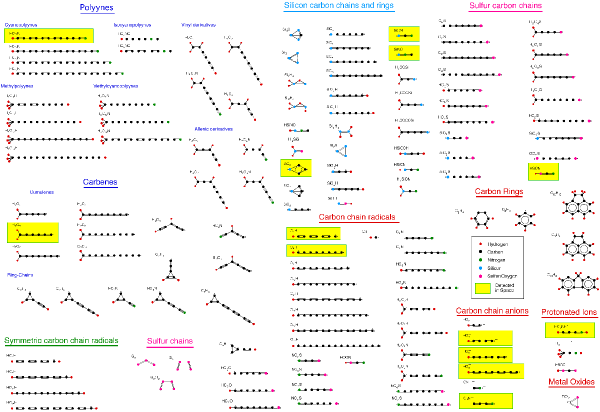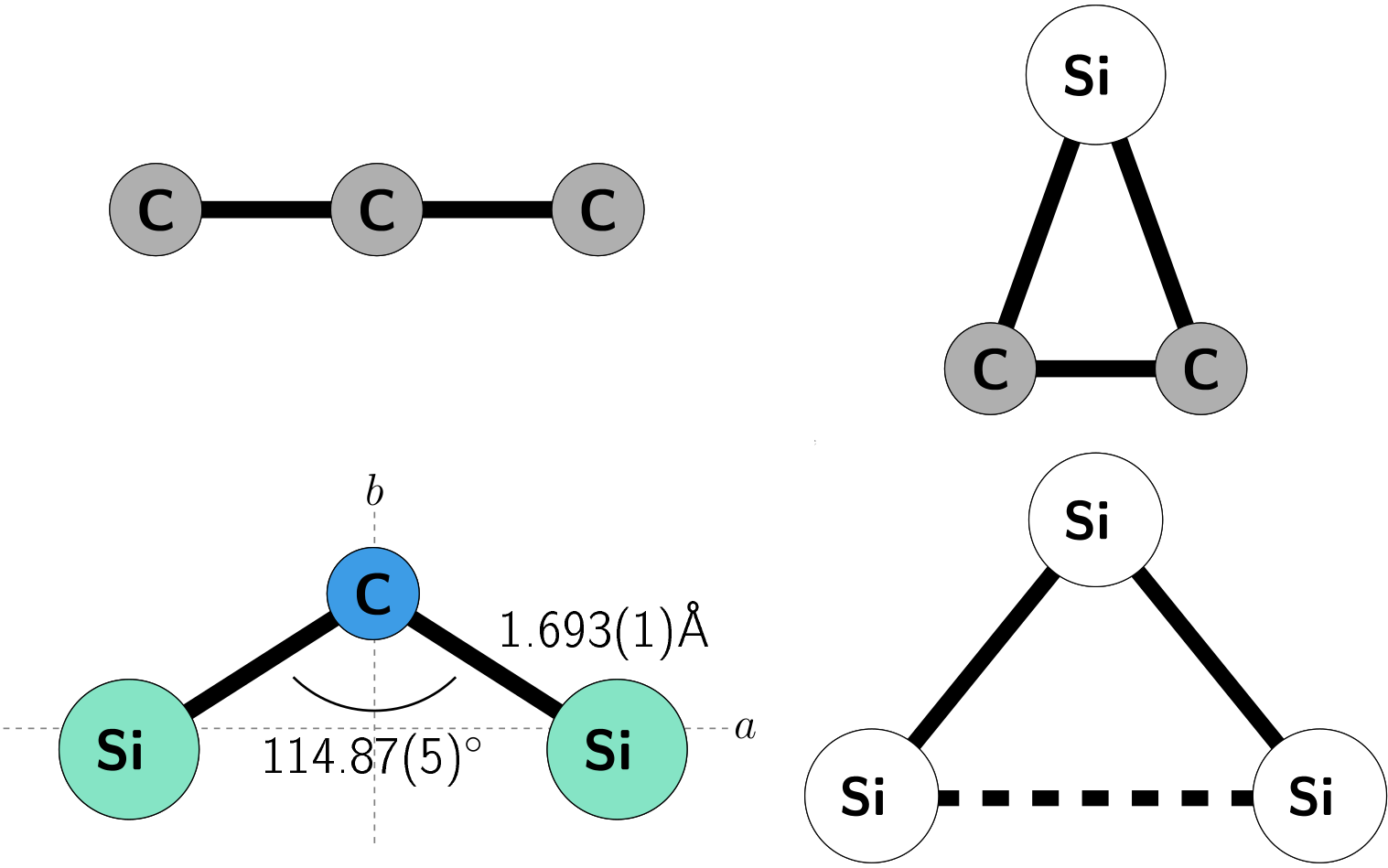Laboratory Astrophysics
Some of the most exciting, current problems in science have come directly from laboratory studies of molecules known or thought to occur in space. From the discovery of CH in 1937 to the subsequent identification of almost 200 astronomical molecules (a complete list of interstellar molecules can be found here), we know that the interstellar medium is a fascinatingly rich source for many familiar and exotic species; many more can probably be found if rest frequencies can be measured in the laboratory.
Laboratory detection of unstable species has proved challenging, but tremendeous results have been obtained by applying Fourier transform microwave spectroscopy to supersonic molecular beams of reactive species. Our lab has a worlwide acknowledged expertise in the study of such species: and many results have been obtained on astrophysical molecules, and 45 interstellar detection involving members of our group.
Carbon chains, carbon rings, and silicon-carbon clusters
The rotational spectra of many new carbon chains, carbon rings, and silicon-carbon clusters has been detected in our lab. Almost all are highly polar, and several possess either unusual carbon ring-chain or bicyclic structures. The largest molecule detected so far is a polyyne chain (HC17N) with 19 atoms and a molecular weight of 219 amu. On the basis of this laboratory data, five chains and one ring have already been detected in space, including one of the largest interstellar molecule HC11N.

[Clic on the image to enlarge]
Laboratory and interstellar detection of Si2C
Very little is known on gaseous precursors of silicon carbide (SiC), present in high concentration in interstellar dust grains, although numerous astronomical models and quantum-chemical calculations have highlighted the potential role of SimCn species, with m+n=3. Si2C was long the missing link to investigate such models, as it was the only member of that family with no laboratory rest frequencies available, wich prevented from its detection in the interstellar medium.

An accurate structure of Si2C has been determined by our group.
Si2C has recently been detected for the first time in our laboratory, and consequently in direction of IRC+10216, the circumstellar envelope of the carbon-rich star CW-Leo. With more than 110 lines of Si2C detected in this source, our observations revealed that the species is as abundant as SiC2, making these two molecules the most abundant SiC-brearing compounds is dust grain formation regions, a result of fundamental importance for the understanding of dust grain chemistry, in particular with respect to the role of Si2C and SiC2 in SiC grain formation.
Find more about the project:
Discovery of a missing link: Detection and structure of the elusive disilicon carbide cluster. M. C. McCarthy, J. H. Baraban, P. B. Changala, J. F. Stanton, M. A. Martin-Drumel, S. Thorwirth, C. A. Gottlieb, and N. J. Reilly. The Journal of Physical Chemistry Letters 6, 2107-2111 (2015)
The ground electronic state of Si2C: Rovibrational level structure, quantum monodromy, and astrophysical implications. N. J. Reilly, P. B. Changala, J. H. Baraban, D. L. Kokkin, J. F. Stanton, and M. C. McCarthy. The Journal of Chemical Physics 142, 231101 (2015)
Discovery of SiCSi in IRC+10216: A missing link between gas and dust carriers of Si-C bonds. J. Cernicharo, M. C. McCarthy, C. A. Gottlieb, M. Agúndez, L. Velilla Prieto, J. H. Baraban, P. B. Changala, M. Guélin, C. Kahane, M. A. Martin-Drumel, N. A. Patel, N. J. Reilly, J. F. Stanton, G. Quintana-Lacaci, S. Thorwirth, and K. H. Young. The Astrophysical Journal Letters 806, L3 (2015)
Ions
About 15% of the known interstellar molecules are ions — approximately 2/3 are positively charged and 1/3 negatively charged. Positive ions play a central role in the gas phase chemistry of the interstellar medium and provide fundamental information on the physical conditions of the interstellar gas (e.g., fractional ionization). Ion-molecule and associated reactions yield stable molecules and still larger polyatomics; and observations of the protonated forms may be used to infer the abundance of nonpolar molecules such as N2 and CO2 which cannot be observed directly in the radio band. Negative ions provide an independent means for estimating the degree of ionization and the rate of radiative electron attachment; serve as moderators of the magnetic field, and hence may make star formation easier and faster in dense molecular clouds; and according to chemical models result in an enhancement in the abundances of unsaturated carbon chain molecules (e.g., the cyanopolyynes) in dark clouds.
Because molecular ions are key intermediates in rich interstellar and circumstellar sources, a continued area of emphasize for our group is the rotational detection of these species by rotational spectroscopy. Recent examples include the cis and trans isomers of HOSO+, H2NCO+, HNCOH+, H2CCHCNH+, C3N-, and NCO-.

